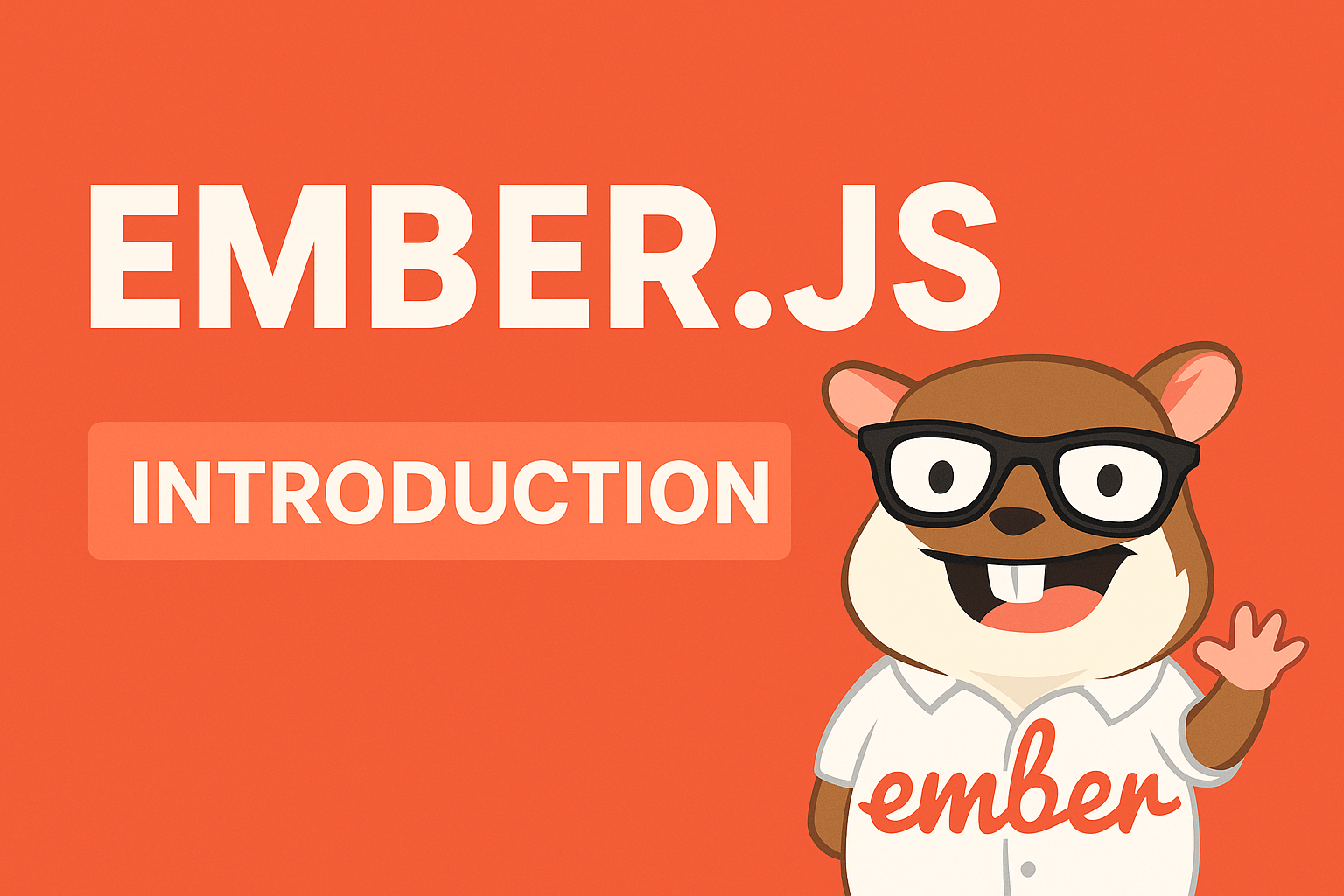
In this article, we’ll see Ember js Introduction.
Table of Contents
In the world of modern web development, creating complex, feature-rich applications demands a framework that excels in managing complexity while promoting maintainability and scalability. Ember.js emerges as a powerful JavaScript framework that empowers developers to build ambitious web applications with ease.
We will explore the key features and advantages of Ember js, highlighting how it can revolutionize your web development journey.
What is Ember js
Ember is a JavaScript front-end framework designed to help you build websites with rich and complex user interactions.
It allows for building client-side JavaScript applications by providing a complete solution that contains data management and an application flow.
It is usually preferred for developing complex and customized Single Page Applications. Ember JS offers the facility of developing interactive apps without making the code appear messy whatsoever. It is likewise known for getting rid of boilerplate when coding and aids in writing programs without many iterations.
EmberJS was developed by Yehuda Katz. It was initially released in December 2011. EmberJS was also formerly known as SproutCore MVC framework.
One of the best things about Ember JS is its speed. Ember JS applications are incredibly fast, making them ideal for high-traffic websites. It is also very scalable, so you can easily add new features and users without affecting performance.
Another great feature of Ember JS is its ease of use. Ember JS is designed to be easy to learn and use, even for beginners. The framework provides a number of tools and features that make it easy to build complex applications, without the need for a lot of custom code.
If you are looking for a fast, scalable, and easy-to-use JavaScript framework, then Ember JS is the perfect choice for you. It is the perfect framework for building modern web applications that are both high-quality and user-friendly.
Why Use Ember.js
- Ember.js is an open-source JavaScript framework under an MIT license.
- It provides the new binding syntax using the HTMLBars template engine which is a superset of the Handerlbars templating engine.
- It provides the Glimmer rendering engine to increase the rendering speed.
- It provides the Command Line Interface utility that integrates Ember patterns into the development process and focuses easily on the developer’s productivity.
- It supports data binding to create the link between two properties and when one property changes, the other property will get upgraded with the new value.
Advantages and Disadvantages of Ember.js
Advantages:
- Convention over configuration. Instead of providing detailed configuration for the various routes in your application, Ember.js favors following naming conventions and automatically generating the resulting code, earmarking configurations only for cases where the convention is not followed.
- Client-side rendering and structure to scalable web applications beyond the view layer.
- URL-support.
- Ember’s object model facilitates Key-Value Observation.
- Nested UIs.
- Minimizes DOM.
- Works well with large application ecosystems.
- The strong data layer integrates well with Java.
- A fully-fledged templating mechanism (Handlebars templating engine built upon the popular Mustache templating engine) reduces the overall amount of code written. It knows nothing about DOM and relies instead upon straight text manipulation, building the HTML document dynamically.
- Uses observers to change values, which results in only rendering the values being changed.
- Avoids “dirty checking” by using accessories.
- Faster boot times and inherent stability.
- Performance focus.
- Friendly docs and API.
Disadvantages:
- Ember.js lacks the reuse of components at the Controller level.
- There is a lot of outdated content and examples that no longer work.
- Steep learning curve.
- Handlebars pollute the DOM with many <script> tags, which it uses as markers to keep the templates up to date with your model.
- Cumbersome when going outside its typical uses.
- Ember’s object model implementation bloats Ember’s overall size and call stack while debugging.
- The most opinionated and heaviest of the frameworks.
- Overblown for small projects.
- The testing story seems vague/incomplete.
Ember js stands out as a robust JavaScript framework for building ambitious web applications. With its convention-driven approach, powerful routing and templating capabilities, Ember Data for data management, component-based architecture, focus on testing, and active community support, Ember.js empowers developers to tackle complex projects with confidence.
By leveraging Ember.js’s features, you can streamline your development process, create scalable applications, and deliver exceptional user experiences. Embrace the power of Ember.js and elevate your web development to new heights.
I Hope this article helps!